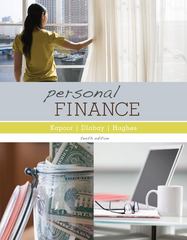Question
2. As a financial institutions and market analyst for WatchYourBack.Com Securities, Inc., a highly respectable financial institutions' securities underwriter and Internet broker, you must prepare
2. As a financial institutions and market analyst for WatchYourBack.Com Securities, Inc., a highly respectable financial institutions' securities underwriter and Internet broker, you must prepare an analysis of the financial condition of a broad range of financial institutions of various sizes, localities, and product lines. Using the "probability of insolvency" model discussed in class where E(ROA) is the expected annual value of aftertax earnings on assets over the next 2 years, s2 is the expected annual variance of ROA over the next 2 years, and K/A is the firm's current Tier I Capital, K, to total assets, A: (a) discuss, based upon your assumptions concerning the risk-return tradeoff embodied in the efficient frontier of possible FI portfolios, what factors determine each of these parameters of financial soundness over the next few years, E(ROA), variance of ROA, and K. (b) Discuss how the federal regulatory capital adequacy policy, in the form of riskbased capital adequacy standards and Prompt Corrective Action, might affect bank and thrift soundness and depository institutions portfolio choices by comparing points A and B below and different choices of capitalization as revealed in the FI's choice of K/A. In this discussion, how does the "too-big-to-fail" policy affect the bank's choice of risk and return and willingness to take risks? Are moral hazard costs increased under a liberal "too-big-to-fail" policy and have the expanded powers of FIs following the passage of the Gramm-Leach-Blily Act increased or decreased these costs?
(c) Which bank portfolio, A with [K/A]0 or B with [K/A]1, has the greater maximum likelihood of insolvency and why? From this conclusion, which bank portfolio could sustain a greater loss of capital value at a 5 percent confidence level assuming ROA is distributed as a normal variable with mean E(ROA) and variance s2?
NOTE: maximum probability of insolvency = s2/[E(ROA) + K/A]2 (as derived from Chebychev's Inequality Theorem). Assets, A, are assumed to grow at the same rate as K equal to RE/K, where RE is expected annual retained earnings.
Step by Step Solution
There are 3 Steps involved in it
Step: 1

Get Instant Access to Expert-Tailored Solutions
See step-by-step solutions with expert insights and AI powered tools for academic success
Step: 2

Step: 3

Ace Your Homework with AI
Get the answers you need in no time with our AI-driven, step-by-step assistance
Get Started


